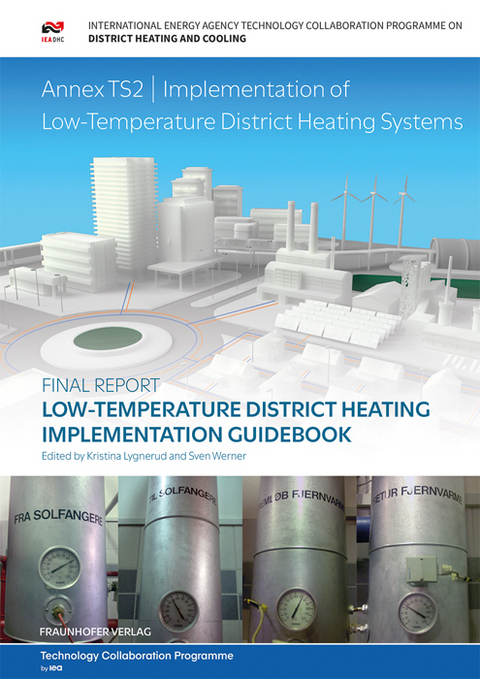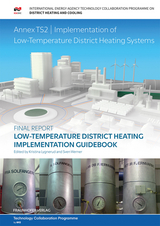Low-Temperature District Heating Implementation Guidebook
Annex TS2 Implementation of Low-Temperature District Heating Systems
Seiten
A book on implementing low temperature district energy solutions is coming. Answers are given to what to do on the building side, in the system and in the business case. The advantage of low tempered district heating systems is cost efficient use of renewable sources like solar, geothermal and waste heat. In combination with heat pumps, they can meet both heating and colling demands in new as well as in existing building stock. For further information on the book please view the IEA-DHC homepage, https://www.iea-dhc.org/home.
Low-Temperature District Heating Implementation Guidebook. This guidebook was written between 2018 and 2021 by seventeen authors within the IEA DHC/CHP TS2 annex. The input came from 250+ literature references and 165 inspiration initiatives to obtain lower temperatures in buildings and heat distribution networks. The author group wrote 40 internal documents about early implementations of low-temperature district heating. Fifteen of these early implementations are presented in this guidebook. The guidebook contains aggregated information about the main economic drivers for low-temperature district heating, how to obtain lower temperatures in heating systems inside existing and new buildings, and how to obtain lower temperatures in existing and new heat distribution networks. An applied study of a campus system in Darmstadt shows the possibility of reducing temperatures in an existing heat distribution network with rather high temperatures. The competitiveness of low-temperature district heating is explored by analysing business models and heat distribution costs. Early adopters of low-temperature district heating are presented by examples and by identified transition strategies. Five groups of network configurations with fourteen variants are presented to be used for low-temperature district heating. Finally, all 165 identified inspiration initiatives and all 137 locations mentioned are listed.
Low-Temperature District Heating Implementation Guidebook. This guidebook was written between 2018 and 2021 by seventeen authors within the IEA DHC/CHP TS2 annex. The input came from 250+ literature references and 165 inspiration initiatives to obtain lower temperatures in buildings and heat distribution networks. The author group wrote 40 internal documents about early implementations of low-temperature district heating. Fifteen of these early implementations are presented in this guidebook. The guidebook contains aggregated information about the main economic drivers for low-temperature district heating, how to obtain lower temperatures in heating systems inside existing and new buildings, and how to obtain lower temperatures in existing and new heat distribution networks. An applied study of a campus system in Darmstadt shows the possibility of reducing temperatures in an existing heat distribution network with rather high temperatures. The competitiveness of low-temperature district heating is explored by analysing business models and heat distribution costs. Early adopters of low-temperature district heating are presented by examples and by identified transition strategies. Five groups of network configurations with fourteen variants are presented to be used for low-temperature district heating. Finally, all 165 identified inspiration initiatives and all 137 locations mentioned are listed.
| Erscheinungsdatum | 08.09.2021 |
|---|---|
| Zusatzinfo | num., mostly col. illus. and tab. |
| Verlagsort | Stuttgart |
| Sprache | englisch |
| Maße | 210 x 297 mm |
| Themenwelt | Technik ► Elektrotechnik / Energietechnik |
| Schlagworte | A • Building • Building owners • Case Studies • Cities undertaking District Energy transition • competitiveness • District heating low temperature • District heatinglow temperature • District Heating Operators • Fraunhofer IEE • installers • Owners of waste heat • policy makers • System |
| ISBN-10 | 3-8396-1745-6 / 3839617456 |
| ISBN-13 | 978-3-8396-1745-8 / 9783839617458 |
| Zustand | Neuware |
| Haben Sie eine Frage zum Produkt? |
Mehr entdecken
aus dem Bereich
aus dem Bereich
DIN-Normen und Technische Regeln für die Elektroinstallation
Buch | Softcover (2023)
Beuth (Verlag)
86,00 €
Kolbenmaschinen - Strömungsmaschinen - Kraftwerke
Buch | Hardcover (2023)
Hanser (Verlag)
49,99 €




